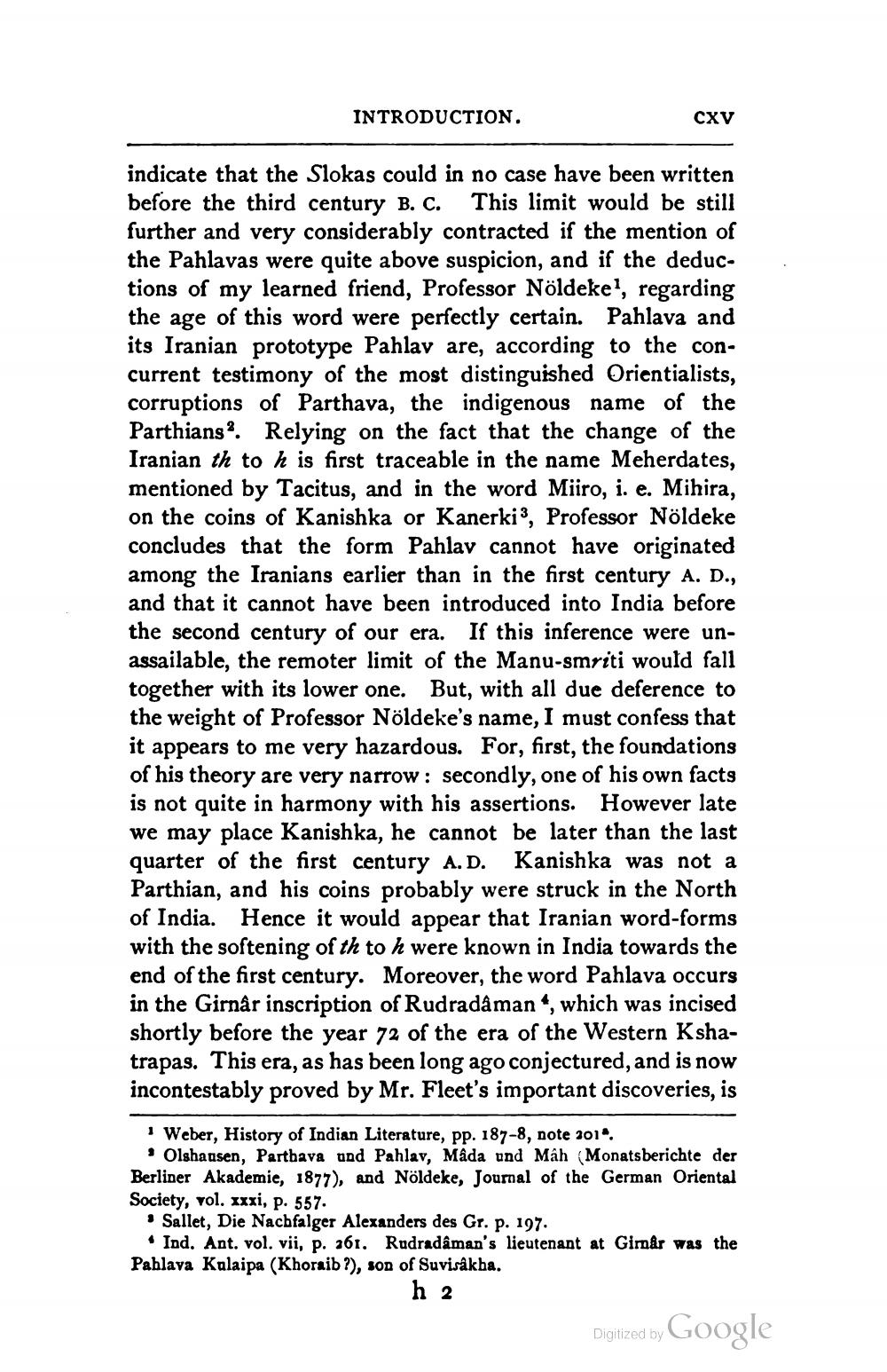________________
INTRODUCTION.
cxv
indicate that the Slokas could in no case have been written before the third century B. C. This limit would be still further and very considerably contracted if the mention of the Pahlavas were quite above suspicion, and if the deductions of my learned friend, Professor Nöldeke', regarding the age of this word were perfectly certain. Pahlava and its Iranian prototype Pahlav are, according to the concurrent testimony of the most distinguished Orientialists, corruptions of Parthava, the indigenous name of the Parthians. Relying on the fact that the change of the Iranian th to his first traceable in the name Meherdates, mentioned by Tacitus, and in the word Miiro, i. e. Mihira, on the coins of Kanishka or Kanerki, Professor Nöldeke concludes that the form Pahlav cannot have originated among the Iranians earlier than in the first century A. D., and that it cannot have been introduced into India before the second century of our era. If this inference were unassailable, the remoter limit of the Manu-smriti would fall together with its lower one. But, with all due deference to the weight of Professor Nöldeke's name, I must confess that it appears to me very hazardous. For, first, the foundations of his theory are very narrow: secondly, one of his own facts is not quite in harmony with his assertions. However late we may place Kanishka, he cannot be later than the last quarter of the first century A.D. Kanishka was not a Parthian, and his coins probably were struck in the North of India. Hence it would appear that Iranian word-forms with the softening of th to h were known in India towards the end of the first century. Moreover, the word Pahlava occurs in the Girnår inscription of Rudradå man“, which was incised shortly before the year 72 of the era of the Western Kshatrapas. This era, as has been long ago conjectured, and is now incontestably proved by Mr. Fleet's important discoveries, is
· Weber, History of Indian Literature, pp. 187-8, note 2014
• Olshausen, Partbava und Pahlav, Mada und Mah Monatsberichte der Berliner Akademie, 1877), and Nöldeke, Journal of the German Oriental Society, vol. xxxi, p. 557.
• Sallet, Die Nachfalger Alexanders des Gr. p. 197.
• Ind. Ant. vol. vii, p. 361. Rudradâman's lieutenant at Gimar was the Pahlava Kalaipa (Khoraib ?), son of Suvisåkha.
h 2
Digitized by Google




